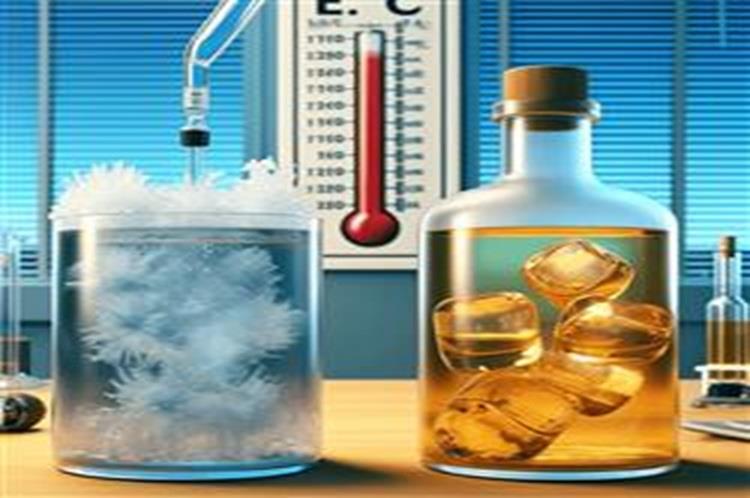
- 06 April 2024
- 1038 Views
Introduction
Most people are familiar with the phenomenon of water turning into ice at 0°C (32°F). However, alcohol behaves differently, often remaining liquid in freezers, where temperatures are well below the freezing point of water. This property makes alcohol a subject of interest in both scientific studies and practical applications, such as in the production of antifreeze. But what exactly makes alcohol so resistant to freezing?
The Science of Freezing
Freezing is a physical process that occurs when a liquid turns into a solid as it cools down. The temperature at which this happens is known as the freezing point. The freezing point of a substance is determined by its molecular structure and the forces at play among its molecules.
Molecular Structure of Alcohol
Alcohol molecules are composed of carbon, hydrogen, and oxygen, but what sets them apart is the presence of a hydroxyl group (-OH). This group influences the physical properties of alcohols, including their boiling and freezing points. The molecular structure of alcohol allows it to form hydrogen bonds, albeit weaker than those formed by water molecules. These hydrogen bonds affect how alcohol molecules interact with each other, playing a crucial role in determining its freezing point.
Ethanol: A Common Example
Ethanol (C2H5OH) is a common type of alcohol found in beverages. Its freezing point is -114.1°C (-173.4°F), significantly lower than that of water. The reason for this drastic difference lies in ethanol's molecular makeup and the strength of the hydrogen bonds it can form. Ethanol's hydrogen bonds are less effective at holding the molecules together in a solid structure, hence its lower freezing point.
Factors Affecting the Freezing Point of Alcohol
Several factors influence the freezing point of alcohol, including:
- Concentration of Alcohol: The purity of the alcohol plays a significant role. Higher concentrations of alcohol will have a lower freezing point.
- Type of Alcohol: Different alcohols have varying molecular sizes and structures, affecting their freezing points. For instance, methanol (CH3OH) freezes at -97.6°C (-143.7°F), while propanol (C3H7OH) has a freezing point of -126°C (-195°F).
- Impurities: The presence of water and other substances can raise the freezing point of alcohol. This is why alcoholic beverages, which are mixtures of ethanol and water, freeze at higher temperatures than pure ethanol.
Practical Applications
The lower freezing point of alcohol has practical applications in various industries. It is used as an antifreeze in automotive engines and as a solvent in the manufacture of pharmaceuticals. Additionally, its properties make it ideal for use in low-temperature scientific research and in the production of some types of thermometers.
Conclusion
Alcohol's resistance to freezing is a fascinating topic that combines chemistry, physics, and practical applications. By understanding the molecular structure of alcohol and how it interacts with temperature, we gain insights into why alcohol behaves the way it does. This knowledge not only satisfies our curiosity but also has practical implications in various fields, showcasing the intriguing interplay between science and everyday phenomena.
